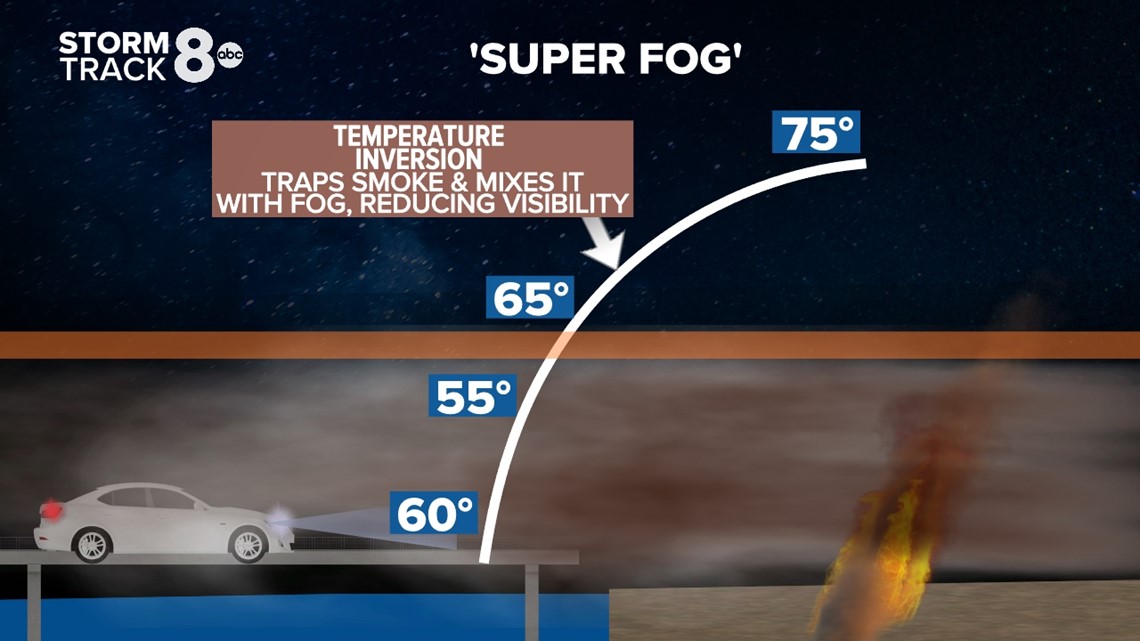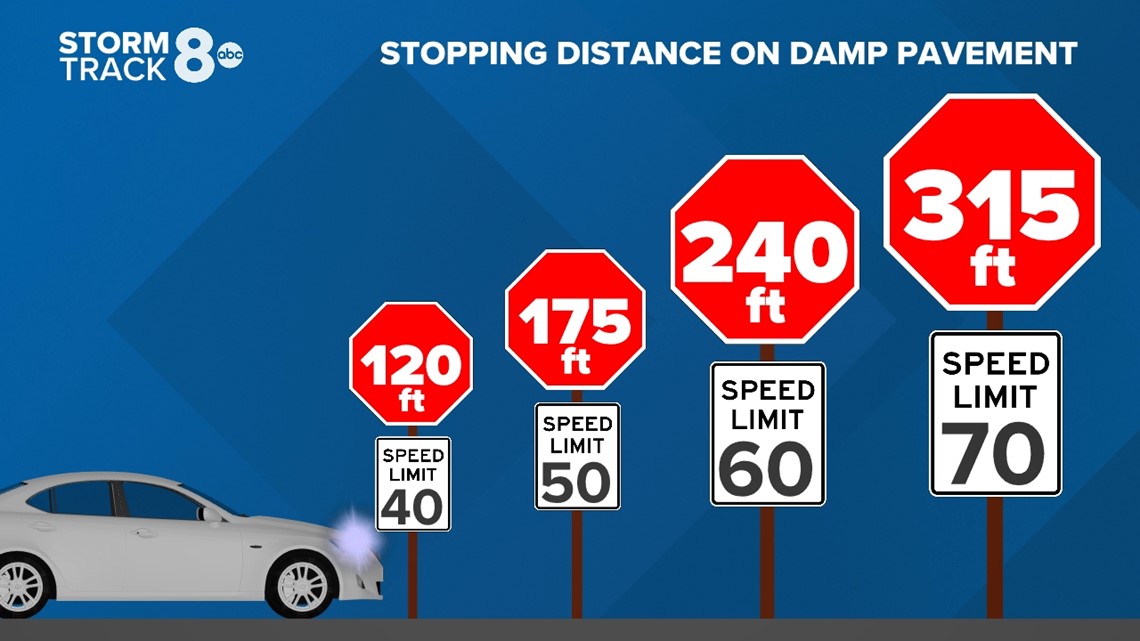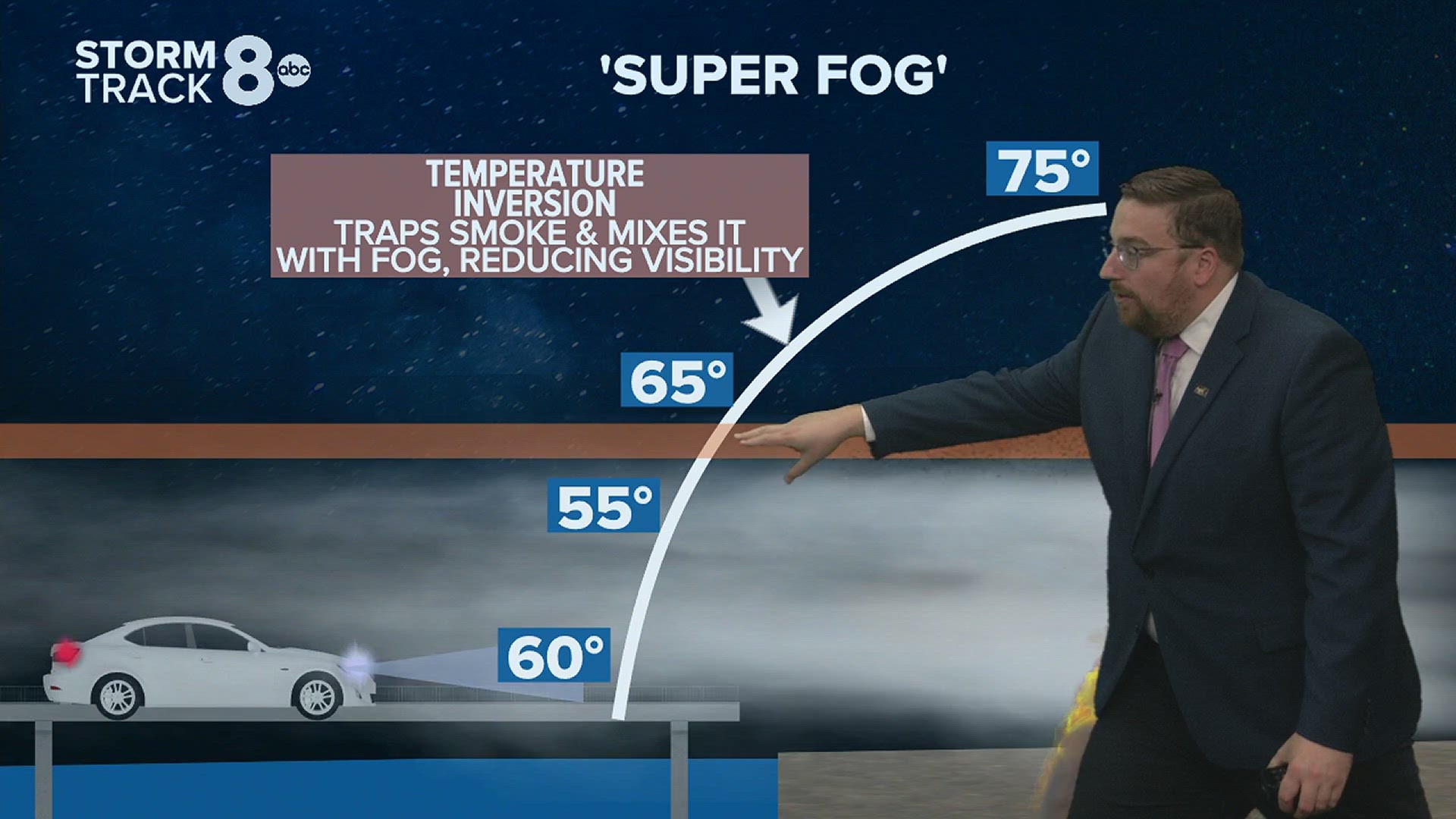MOLINE, Ill. — Most of us are used to driving through fog, often several times during the year. We turn on our low-beam headlights or fog lights if we have them, reduce our speed, and pay extra attention at intersections. But, what about 'super fog'? This particular type of fog has claimed the lives of eight people so far this week after a deadly traffic pileup in Louisiana. What makes this type of fog often more deadly and what should we do if we encounter it? Let's dig in!
What makes 'super fog' so dangerous
All types of fog are dangerous, however, 'super fog' is even more dangerous because it can reduce visibility down to just ten feet in front of you. That's not enough distance to react to anything that may be traveling ahead of you, whether it be another vehicle or any other object without avoiding a collision.


'Super fog' forms when smoke from a nearby fire or other combustion event, including fireworks, gets caught underneath what we call an inversion. Simply put, typically when you go from the ground into the atmosphere, the temperature cools. In some cases, you can have a layer of warm air just above the ground that interrupts this cooling process, and it will create a lid, trapping everything from fog to even smoke near the ground. That's exactly what happened in the case of this most recent deadly 'super fog' event.


Louisiana has been experiencing widespread extreme to exceptional drought conditions for months. In fact, 62% of the state is currently in the highest level of drought, the worst since 2011, according to ABC Chief Meteorologist Ginger Zee. Ongoing marsh fires not too far from I-55 created the smoke that mixed with ongoing fog that eventually led to the deadly traffic pileup along the interstate.


Your typical interstate traffic moves along between 55-70 mph and in some cases, faster. When you reduce visibility down to just ten feet, it's no wonder a significant traffic crash and pileup event is imminent during this type of weather pattern. The typical stopping distance also increases dramatically when the pavement is damp, in some cases exceeding more than 200 feet. Combine the speed factor, fog factor, and likely a little bit of distracted driving, and you've got yourself a disaster.
How often does 'super fog' form?
Meteorologists with the U.S. National Weather Service in New Orleans say 'super fog' events are not very rare, but they do take the perfect storm of conditions to materialize and can happen a few times per year. Even fireworks can create 'super fog' conditions as that smoke becomes trapped underneath a temperature inversion just above the ground.
What makes this different from smog?
Both smog and 'super fog' are considered types of fog, according to the U.S. National Weather Service. Smog, however, forms when fog combines with smoke from pollutants, posing a health hazard and also reducing visibility. 'Super fog' describes fog that becomes more dense as smoke from damp, burning vegetation gets mixed in.
If you encounter 'super fog' or any other fog
-Drive with your lights on low-beam. The high-beam setting will only reflect even more water droplets and make visibility in front of you much worse.
-Reduce your speed and increase the distance between vehicles
-Avoid crossing traffic
-Turn on windshield wipers and use the defrost setting on your vehicle's climate control to maximize your visibility
-Approach intersections with extreme caution. Roll down your windows to listen for oncoming traffic if possible.
Have a question you would like me to answer for an upcoming Ask Andrew segment? Submit it, here.
Watch more news, weather and sports on our YouTube channel

